1995 - 1997
Back before Google? Aye, there's the Rub.
According to Google lore, company founders Larry Page and Sergey Brin were not terribly fond of each other when they first met as Stanford University graduate students in computer science in 1995. Larry was a 24-year-old University of Michigan alumnus on a weekend visit; Sergey, 23, was among a group of students assigned to show him around. They argued about every topic they discussed. Their strong opinions and divergent viewpoints would eventually find common ground in a unique approach to solving one of computing's biggest challenges: retrieving relevant information from a massive set of data.
By January of 1996, Larry and Sergey had begun collaboration on a search engine called BackRub, named for its unique ability to analyze the "back links" pointing to a given website. Larry, who had always enjoyed tinkering with machinery and had gained some notoriety for building a working printer out of Lego™ bricks, took on the task of creating a new kind of server environment that used low-end PCs instead of big expensive machines. Afflicted by the perennial shortage of cash common to graduate students everywhere, the pair took to haunting the department's loading docks in hopes of tracking down newly arrived computers that they could borrow for their network.
A year later, their unique approach to link analysis was earning BackRub a growing reputation among those who had seen it. Buzz about the new search technology began to build as word spread around campus.
1998
The search for a buyer
Larry and Sergey continued working to perfect their technology through the first half of 1998. Following a path that would become a key tenet of the Google way, they bought a terabyte of disks at bargain prices and built their own computer housings in Larry's dorm room, which became Google's first data center. Meanwhile Sergey set up a business office, and the two began calling on potential partners who might want to license a search technology better than any then available. Despite the dotcom fever of the day, they had little interest in building a company of their own around the technology they had developed.
Among those they called on was friend and Yahoo! founder David Filo. Filo agreed that their technology was solid, but encouraged Larry and Sergey to grow the service themselves by starting a search engine company. "When it's fully developed and scalable," he told them, "let's talk again." Others were less interested in Google, as it was now known. One portal CEO told them, "As long as we're 80 percent as good as our competitors, that's good enough. Our users don't really care about search."
Touched by an angel
Unable to interest the major portal players of the day, Larry and Sergey decided to make a go of it on their own. All they needed was a little cash to move out of the dorm — and to pay off the credit cards they had maxed out buying a terabyte of memory. So they wrote up a business plan, put their Ph.D. plans on hold, and went looking for an angel investor. Their first visit was with a friend of a faculty member.
Andy Bechtolsheim, one of the founders of Sun Microsystems, was used to taking the long view. One look at their demo and he knew Google had potential — a lot of potential. But though his interest had been piqued, he was pressed for time. As Sergey tells it, "We met him very early one morning on the porch of a Stanford faculty member's home in Palo Alto. We gave him a quick demo. He had to run off somewhere, so he said, 'Instead of us discussing all the details, why don't I just write you a check?' It was made out to Google Inc. and was for $100,000."
The investment created a small dilemma. Since there was no legal entity known as "Google Inc.," there was no way to deposit the check. It sat in Larry's desk drawer for a couple of weeks while he and Sergey scrambled to set up a corporation and locate other funders among family, friends, and acquaintances. Ultimately they brought in a total initial investment of almost $1 million.
Everyone's favorite garage band
In September 1998, Google Inc. opened its door in Menlo Park, California. The door came with a remote control, as it was attached to the garage of a friend who sublet space to the new corporation's staff of three. The office offered several big advantages, including a washer and dryer and a hot tub. It also provided a parking space for the first employee hired by the new company: Craig Silverstein, now Google's director of technology.
Already Google.com, still in beta, was answering 10,000 search queries each day. The press began to take notice of the upstart website with the relevant search results, and articles extolling Google appeared in USA TODAY and Le Monde. That December, PC Magazine named Google one of its Top 100 Web Sites and Search Engines for 1998. Google was moving up in the world.
1999
On the road again
Google quickly outgrew the confines of its Menlo Park home, and by February 1999 had moved to an office on University Avenue in Palo Alto. At eight employees, Google's staff had nearly tripled, and the service was answering more than 500,000 queries per day. Interest in the company had grown as well. Red Hat signed on as its first commercial search customer, drawn in part by Google's commitment to running its servers on the open source operating system Linux.
On June 7, the company announced that it had secured a round of funding that included $25 million from the two leading venture capital firms in Silicon Valley, Sequoia Capital and Kleiner Perkins Caufield & Byers. In a replay of the convergence of opposites that gave birth to Google, the two firms — normally fiercely competitive, but seeing eye-to-eye on the value of this new investment — both took seats on the board of directors. Mike Moritz of Sequoia and John Doerr of Kleiner Perkins — who between them had helped grow Sun Microsytems, Intuit, Amazon, and Yahoo! — joined Ram Shriram, CEO of Junglee, at the ping pong table that served as formal boardroom furniture.
In short order, key hires began to fill the company's modest offices. Omid Kordestani left Netscape to accept a position as vice president of business development and sales, and Urs Hölzle was hired away from UC Santa Barbara as vice president of engineering. It quickly became obvious that more space was needed. At one point the office became so cramped that employees couldn't stand up from their desks without others tucking their chairs in first.
No beta search engine
The gridlock was alleviated with the move to the Googleplex, Google's current headquarters in Mountain View, California. And tucked away in one corner of the two-story structure, the Google kernel continued to grow — attracting staff and clients and drawing attention from users and the press. AOL/Netscape selected Google as its web search service and helped push traffic levels past 3 million searches per day. Clearly, Google had evolved. What had been a college research project was now a real company offering a service that was in great demand.
On September 21, 1999, the beta label came off the website.
Still Google continued to expand. The Italian portal Virgilio signed on as a client, as did Virgin Net, the UK's leading online entertainment guide. The spate of recognition that followed included a Technical Excellence Award for Innovation in Web Application Development from PC Magazine and inclusion in several "best of" lists, culminating with Google's appearance on Time magazine's Top Ten Best Cybertech list for 1999.
2000
Built-in innovation
At the Googleplex, a unique company culture was evolving. To maximize the flexibility of the work space, large rubber exercise balls were repurposed as highly mobile office chairs in an open environment free of cubicle walls. While computers on the desktops were fully powered, the desks themselves were wooden doors held up by pairs of sawhorses. Lava lamps began sprouting like multi-hued mushrooms. Large dogs roamed the halls — among them Yoshka, a massive but gentle Leonberger. After a rigorous review process, Charlie Ayers was hired as company chef, bringing with him an eclectic repertoire of health-conscious recipes he developed while cooking for the Grateful Dead. Sections of the parking lot were roped off for twice-weekly roller hockey games. Larry and Sergey led weekly TGIF meetings in the open space among the desks, which easily accommodated the company's 60-odd employees.
The informal atmosphere bred both collegiality and an accelerated exchange of ideas. Google staffers made many incremental improvements to the search engine itself and added such enhancements as the Google Directory (based on Netscape's Open Directory Project) and the ability to search via wireless devices. Google also began thinking globally, with the introduction of ten language versions for users who preferred to search in their native tongues.
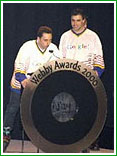 Google's features and performance attracted new users at an astounding rate. The broad appeal of Google search became apparent when the site was awarded both a Webby Award and a People's Voice Award for technical achievement in May 2000. Sergey's and Larry's five-word acceptance speech: "We love you, Google users!" The following month, Google officially became the world's largest search engine with its introduction of a billion-page index — the first time so much of the web's content had been made available in a searchable format.
Google's features and performance attracted new users at an astounding rate. The broad appeal of Google search became apparent when the site was awarded both a Webby Award and a People's Voice Award for technical achievement in May 2000. Sergey's and Larry's five-word acceptance speech: "We love you, Google users!" The following month, Google officially became the world's largest search engine with its introduction of a billion-page index — the first time so much of the web's content had been made available in a searchable format.
Through careful marshalling of its resources, Google had avoided the need for additional rounds of funding beyond its original venture round. Already clients were signing up to use Google's search technology on their own sites. With the launch of a keyword-targeted advertising program, Google added another revenue stream that began moving the company into the black. By mid-2000, these efforts were beginning to show real results.
On June 26, Google and Yahoo! announced a partnership that solidified the company's reputation — not just as a provider of great technology, but as a substantial business answering 18 million user queries every day. In the months that followed, partnership deals were announced on all fronts, with China's leading portal NetEase and NEC's BIGLOBE portal in Japan both adding Google search to their sites.
 To extend the power of its keyword-targeted advertising to smaller businesses, Google introduced AdWords, a self-service ad program that could be activated online with a credit card in a matter of minutes. And in late 2000, to enhance users' power to search from anywhere on the web, Google introduced the Google Toolbar. This innovative browser plug-in made it possible to use Google search without visiting the Google homepage, either using the toolbar's search box or right-clicking on text within a web page, as well as enabling the highlighting of keywords in search results. The Google Toolbar would prove enormously popular and has since been downloaded by millions of users.
To extend the power of its keyword-targeted advertising to smaller businesses, Google introduced AdWords, a self-service ad program that could be activated online with a credit card in a matter of minutes. And in late 2000, to enhance users' power to search from anywhere on the web, Google introduced the Google Toolbar. This innovative browser plug-in made it possible to use Google search without visiting the Google homepage, either using the toolbar's search box or right-clicking on text within a web page, as well as enabling the highlighting of keywords in search results. The Google Toolbar would prove enormously popular and has since been downloaded by millions of users.
As 2000 ended, Google was already handling more than 100 million search queries a day — and continued to look for new ways to connect people with the information they needed, whenever and wherever they needed it. They reached out first to a population with a never-ending need for knowledge — students, educators, and researchers — paying homage to Google's academic roots by offering free search services to schools, universities, and other educational institutions worldwide.
Realizing that people aren't always at their desks when questions pop into their heads, Google set out to put wireless search into as many hands as possible. The first half of 2001 saw a series of partnerships and innovations that would bring Google search to a worldwide audience of mobile users. Wireless Internet users in Asia, Japanese users of i-mode mobile phones, Sprint PCS, Cingular, and AT&T Wireless customers, and other wireless device users throughout the world gained untethered access to the 1.6 billion web documents in Google's growing index.
2001
Google finds a few things it needs
Meanwhile, Google had acquired a cornerstone of Internet culture. In February, Google took on the assets of Deja.com and began the arduous task of integrating the huge volume of data in the Internet's largest Usenet archive into a searchable format. In short order, Google introduced improved posting, post removal, and threading of the 500 million-plus messages exchanged over the years on Usenet discussion boards.
As Google's global audience grew, the patterns buried in the swarm of search queries provided a snapshot of what was on humanity's mind. Sifting through a flood of keywords, Google captured the top trending searches and institutionalized them as the Google Zeitgeist, a real-time window into the collective consciousness. The Google Zeitgeist showcases the rising and falling stars in the search firmament as names and places flicker from obscurity to center stage and fade back again. Like an S&P Index for popular culture, the Google Zeitgeist charts our shifting obsessions and the impermanence of fame.
As Google's search capabilities multiplied, the company's financial footing became even more solid. By the beginning of the fourth quarter of 2001, Google announced that it had found something that had eluded many other online companies: profitability. And in a nod to Google's growing business impact, Dr. Eric Schmidt, whose long-time technology career included stints as CEO at Novell Inc. and CTO of Sun Microsystems, joined Google as CEO in August 2001.
Information without barriers
Google's circle of friends continued to widen. An agreement with Lycos Korea brought Google search to a new group of Asian Internet users. In October, a partnership with Universo Online (UOL) made Google Latin America's premier search engine. New sales offices opened in Hamburg and Tokyo to satisfy growing international interest in Google's advertising programs. Google's borderless appeal was also evident in its evolving user interface: Users could now limit searches to sites written in Arabic, Turkish, or any of 26 other languages.
Meanwhile the Google search engine evolved again and learned to crawl several new kinds of information. File type search added a dozen formats to Google's roster of searchable documents. In December, Google Image Search, first launched during the summer with 250 million images, came out of beta with advanced search added and an expanded image index. Online shopping took a leap forward with the beta launch of Google Catalog Search, which made it possible for Google users to search and browse more than 1,100 mail order catalogs that previously had been available only in print.
December also brought another milestone: The Google search index reached 3 billion searchable web documents, another leap forward in Google's mission to make the world's information accessible. Google's year came to a close, appropriately, with the Year-End Google Zeitgeist, a retrospective on the search patterns, trends, and top search terms of 2001.
2002
Good things come in yellow boxes
Google's success in charting the public Internet had helped make it the Internet search engine of choice. But Googlebot, the robot software that continually crawls the web to refresh and expand Google's index of online documents, had to turn back at the corporate firewall — which left employees, IT managers, and productivity-conscious executives wishing for a way to bring the power of Google search into their workplaces.
Their wish came true in February of 2002, with the introduction of the Google Search Appliance, a plug-and-play search solution in a bright yellow box. Soon it was crawling company intranets, e-commerce sites, and university networks, with organizations from Boeing to the University of Florida powering their searches with "Google in a box."
In love with innovation
The love affair between Google and the technology community — engineers, programmers, webmasters, and early adopters of all shapes and sizes — went back to the days when word-of-mouth from tech-savvy users spread the budding search engine's reputation far beyond the Stanford campus. That ongoing romance was evident at the 2001 Search Engine Watch Awards, announced in February of 2002, where the webmaster community awarded Google top honors for Outstanding Search Service, Best Image Search Engine, Best Design, Most Webmaster Friendly Search Engine, and Best Search Feature.
Google showed the affection was mutual with a trio of initiatives to delight the most avid technophile. The Google Programming Contest coupled a daunting challenge with a tempting prize: $10,000, a visit to the Googleplex, and a chance for the winner to spend some quality time with the Google code base. (The eventual winner, Daniel Egnor of New York, created a program enabling users to search for webpages within a specified geographic area.)
Google's web application programming interfaces (APIs) enabled software programs to query Google directly, drawing on the data in billions of web documents. Their release sparked a flurry of innovation, from Google-based games to new search interfaces.
Google Compute, newly added to the Google Toolbar, took advantage of idle cycles on users' computers to help solve computation-intensive scientific problems. The first beneficiary: Folding@home, a non-profit Stanford University research project to analyze the structure of proteins with an eye to improving treatments for a number of illnesses.
Advertising that people want to see
In February of 2002, AdWords, Google's self-service advertising system, received a major overhaul, including a cost-per-click (CPC) pricing model that makes search advertising as cost-effective for small businesses as for large ones. Google's approach to advertising has always followed the same principle that works so well for search: Focus on the user and all else will follow. For ads, this means using keywords to target ad delivery and ranking ads for relevance to the user's query. As a result, ads only reach the people who actually want to see them - an approach that benefits users as well as advertisers.
In May, that approach got a vote of confidence when America Online — calling Google "the reigning champ of online search" — chose the company to provide both search and advertising to its 34 million members and tens of millions of other visitors to AOL properties. Further confirmation came when BtoB Magazine named Google the #1 business-to-business website and the #5 B2B ad property in any medium, online or off.
The launch of Google Labs enabled Google engineers to present their pet ideas proudly to an adventurous audience. Users could get acquainted with prototypes that were still a bit wet behind the ears, while developers received feedback that helped them groom their projects for success. Works-in-progress ranged from Google Voice Search, enabling users to search on Google with a simple telephone call, to Google Sets, which generates complete sets (a list of gemstones, say) from a few examples (topaz, ruby, opal), giving each member of the new set its own search link.
All the news that's fit to click
Google News launched in beta in September of 2002, offering access to 4,500 leading news sources from around the world. Headlines and photos are automatically selected and arranged by a computer program which updates the page continuously. The free service lets users scan, search, and browse, with links from each headline to the original story.
Froogle, a product search service launched in test mode in December of 2002, continued Google's emphasis on innovation and objective results. Searching through millions of relevant websites, Froogle helps users find multiple sources for specific products, delivering images and prices for the items sought.
2003
And the worlds turn
Google's innovations continued to reshape not only the world of search, but also the advertising marketplace and the realm of publishing. In 2003, Google acquired Pyra Labs and became the home for Blogger, a leading provider of services for those inclined to share their thoughts with the world through online journals (weblogs). Not long thereafter, the Google AdSense program was born, offering web sites of all sizes a way to easily generate revenue through placement of highly targeted ads adjacent to their content. Google AdSense technology analyzes the text on any given page and delivers ads that are appropriate and relevant, increasing the usefulness of the page and the likelihood that those viewing it will actually click on the advertising presented there.
Version 2.0 of the Google Toolbar was released in the Spring and the Google Deskbar joined it in the Fall. The Toolbar's enhancements included a pop-up blocker and form filler, while the Deskbar's location in the Windows Taskbar made it possible to search using Google without even launching a web browser. And there was so much more to find, thanks to the addition of a calculator feature, parcel tracking, flight information, VIN numbers and more, all accessible through the same Google search box.
2004
This message just in
As Google's site index increased to 4.28 billion web pages, Brandchannel again named Google as "Brand of the Year" for 2003, and ABC News marked the occasion by naming Larry and Sergey "Persons of the Week." Google consolidated much of its Mountain View operations into new headquarters campus. And on February 17 Google announced an expanded web index with more than 6 billion items (including the aforementioned 4.28 billion web pages plus 880 million images, 845 million Usenet messages, and a growing collection of book-related information pages).
Other new services that emerged early in 2004 included Local Search, for those times when all a person needs is a tire store that's within walking distance, or a neighborhood place close enough to deliver fresh cannolis. Within weeks, Google followed up with a way for advertisers to target their ads to locations a set distance from their stores. It was an improvement for merchants that also made it easier for searchers to find goods and services for sale in their own neighborhoods. Then came personalized search on Google Labs, enabling users to specify their interests and adjust the level of customization in their search results.
On April 1, Google posted plans to open a research facility on the Moon and announced a new web-based mail service called Gmail, which at launch included a gigabyte of free storage for each user. It soon became apparent that Gmail was no joke. The first serious re-examination of web-based email in years, Gmail offered a powerful built in search function, messages grouped by subject line into conversations and enough free storage to hold years' worth of messages. Using AdSense technology, Gmail was designed to deliver relevant ads adjacent to mail messages, giving recipients a way to act on this information.
And on April 29, Google filed with the SEC for an initial public offering (IPO). In early May, Blogger rolled out an upgraded version of its free web-based publishing software that enables users to create, collect, and share opinions and experiences with a global audience. And in June, Google announced a new version of the Google Search Appliance, now with the capacity for more than 300 queries per minute and the ability to scale from 150,000 to 15 million or more documents.
What's a picture worth?
Google announced its acquisition of Picasa, Inc. on July 13. This Pasadena, Calif.-based digital photo management company helps users to organize, manage and share their digital photos. Picasa also makes Hello, a small application for posting photos to Blogger weblogs and sharing them with friends using instant messenger technology.
August 19 marked the initial public offering of GOOG on NASDAQ through a little-known Dutch auction process, which is designed to attract a broader range of investors than the usual IPO often does.
The second annual Code Jam, an event designed to attract the best and brightest among computer programmers, takes place on the Google campus with 50 finalists from around the world competing in a time-limited software coding contest. The top coder was Sergio Sancho, a computer science student from the University of Buenos Aires, who won the top prize of $10,000. On October 14 Google released the first version of Google Desktop Search, a small free downloadable application for locating one's personal computer files (including email, work files, web history, and instant message chats) using Google-quality search. That September we also passed the milestone of having more than 100 Google domains (Norway and Kenya are no. 102 and no. 103).
Google SMS became a new beta offering in October, enabling people who are away from their computers to quickly and easily get instant, accurate answers to queries (like local business listings, dictionary definitions, or product prices) through text messaging, using a cell phone or handheld device such as a BlackBerry, by sending a query to the 5-digit U.S. shortcode 46645 (also GOOGL on most mobile phones).
Also in October we announced our first quarterly results as a public company, with record revenues of $805.9 million, up 105 percent year over year. We also signed a new expanded alliance with AOL Europe to provide a comprehensive and relevant search and advertising experience to approximately 6.3 million members in the UK, France and Germany.
What's a picture worth? (part 2)
Towards the end of October, Google announced the acquisition of Keyhole Corp., a digital and satellite image mapping company based in Google's own headquarter town, Mountain View, Calif. The acquisition gave Google users a powerful new search tool to view 3D images across earth, and the ability to tap a rich database of roads, businesses and many other points of interest.
Our European operations moved into new Dublin headquarters, with an official welcome from the Deputy Prime Minister, Mary Harney. The 150 Googlers who work here come from 35 countries and speak 17 languages – imperative for doing business across Europe. And our founders received new honors: Larry Page was inducted into the National Academy of Engineering, and he and Sergey Brin are named the 2004 Marconi Fellows, joining the august company of such previous winners as Tim Berners-Lee and Bob Metcalfe.
Expanding horizons
In a nod to Google's continuing international expansion, Nikesh Arora joined as senior executive overseeing Google's operations in the European market. Based in London, Arora, fresh from executive stints at T-Mobile and Deutsche Telekom, became responsible for continuing to create and expand strategic partnerships in Europe. And elsewhere in the world – namely Tokyo – we announce a new R&D center to attract the best and brightest among Japanese and other Asian engineers. Further expansion occurs in Kirkland, Washington, where we open a new engineering center, which joins the others around the world. Also in November, the Google index of web pages now numbers 8 billion.
In December, launches included Google Groups, a new version of the venerable Usenet archive of 1 billion posts on thousands of topics that Google has managed since 2001. The new Google Groups enables users to create and manage their own email groups and discussion lists. And the Google Print program announced agreements with the libraries of Harvard, Stanford, the University of Michigan, and the University of Oxford, and The New York Public Library to digitally scan books from their collections so that users worldwide can search them in Google.
2005
Something blue, something new
The Google Search Appliance spawned a new blue Google Mini, a smaller and lower-cost solution for small and medium-sized businesses that want Google quality search for their documents and sites. The Mini is the first (and so far only) Google hardware product to be sold only through the Google Store alongside a variety of consumer goods that often feature the four-color logo. Google Video also launched – a new project that captures the closed-caption information on TV programming and makes it searchable. Meanwhile, Google's Image Search grew to contain more than 1 billion images of all types – photos, drawings, paintings, sketches, cartoons, posters, and more.
The latest version of Google Desktop Search rolled out, now with the ability to locate many more file types including PDF and MP3. It's available in English, French, German, Spanish, Italian, Dutch as well as Chinese, Japanese and Korean. Google formally opened its Hyderabad office for AdWords support and QA projects – as well as a home for Google's first cricket club. And in May, we launched Google Desktop Search for the Enterprise – a way to enable Google-quality search across a corporate or organization's network with the security, information and deployment controls an IT administrator needs.
Another new feature launched in Google Local: Google Maps, a dynamic online mapping feature users in North America use to find location information, navigate through maps, and get directions quickly and easily. Google Maps is distinguished by easy navigation, detailed route directions, and business locations related to the requested query. Even more fun: by integrating Keyhole technology, Google Maps can display a map view or a satellite view.
The faster we go…
At Google we find that speed is of the essence, and it appears that many other people also crave saving time. This universal fact has led to such innovations as My Search History (saving time by knowing, and showing, what you've searched before) and the Google Web Accelerator (saving time serving web pages by "pre-fetching" them – delivering only updated content).
In March, Google acquired San Diego-based web analytics firm Urchin Software. Thousands of popular websites and marketers use this software solution to better understand user experience as well as to optimize content and track marketing performance. Google plans to make these tools available to better enable website owners to make their sites more effective and to increase their advertising return on investment.
A long-standing Google interest has been to support, locate and hire women engineers. We regularly host women's recruiting events and we offer scholarships through the Anita Borg Memorial Scholarship Fund. In 2005 we recognized 23 young women with scholarships – outstanding female undergraduate and graduate students who are completing their degrees in computer science or related fields.
Also in 2005, it seemed all the world took notice of blogs and feeds – two important ways to publish quickly and easily, and to subscribe to many timely publication sites. After a year of learning and growing, our own Google Blog runs frequent postings about Google products and people by those who know them best – and thousands of people subscribe to the feed so they can read it on the go. And in May we launched AdSense for feeds, a way for every blogger to gain ad revenue by running targeted AdSense ads within the feed. As for Blogger, we continue to develop features, including the ability to post new items and photos from anywhere – even a mobile phone.
As midyear beckoned, we announce an option on Google Labs that some people have asked for: a Personalized Homepage on which you can add news headlines from any sources offering feeds, as well as stock quotes, weather, movie showtimes, even driving directions. Some people want their Google in "classic" (plain) form – but others have asked for this variation too.
Prior to the June launch of Google Sitemaps, webmasters published their pages to the web and waited for us to crawl their site for inclusion in the Google search index. With this in place, they are able to prioritize the pages they want crawled first, and tell us when pages are updated so that Google can index new content faster. We also traveled to the Land of the Midnight Sun – and opened a Scandinavian sales office in Stockholm.
And speaking of the world at large, our Keyhole acquisition last fall led us to create Google Earth, which was unveiled in late June. This technology enables users to fly through space, zooming into specific locations they choose, and seeing the real world in sharp focus. It turns out that when we talk about "the world's information," we mean geography too. And since the earth includes the fast-moving country of China, in July we announced the opening of a new Chinese R&D center and hired the distinguished Dr. Kai Fu-Lee. We're always busy hiring, and one of the most important roles is "executive chef." In August we announced that the search is on for not one, but two chefs to lead our growing Mountain View eateries in serving Googlers and their guests at breakfast, lunch, dinner and special events.
Although August is traditionally a time to slow down, we didn't seem to. We released two significant products during the month: Google Talk, a free way to actually speak to people anytime, anywhere via your computer, featuring crystal-clear voice technology, plus an instant message service; and the next generation of Google Desktop, now offering at-a-glance access to your files, email, news, photos, weather, RSS feeds, stocks and other personalized web content.
Keeping true to our roots in search, in mid-September we released Google Blog Search, a tool to help people find lively content as soon as it's live on blogs around the world. And in recognition of our indebtedness to visionaries, we announced the hiring of Internet pioneer Vint Cerf to continue his global Internet thinking on our behalf.
Going local and global
In October we merged our Local and Maps products into a single Google Local service that (naturally) features maps. Perhaps even better for those away from their computer screens, we now offer Local service via mobile phones – after all, you need these way-finding tools even more when out in the wilds of major cities. We also noted, in our third quarter earnings announcement, the fact that we now have 4,989 full time employees – that's up from 4,183 at the end of the previous quarter.
Responding to the continuing (if not relentless) glut of digital information, we unveiled a new web-based Google Reader in October that helps tame the flow of blog, web page, and news subscriptions we all seem to have. The Reader is a more friendly way to gather all the data bits in one screen, and is equipped to manage several flavors of "feeds." At the same, we expanded our support of open source software initiatives through a total of $350,000 in grants to Oregon State and Portland State Universities for open source development. These follow our "Summer of Code," a 3-month $2 million program for computer science students.
The more initiatives we undertake, the greater the need to expand, and so we announced a new office in Phoenix, and also ramped up staffing when we announced that Johnny Chou will join Kai-Fu Lee in Beijing as president of sales and business development for greater China. Not long after, we opened our first offices in Latin America too – in Sao Paulo, Brazil and in Mexico City.
Enhancing core businesses
In mid-November 2005, we launched two significant services that expand on our core businesses of search and advertising. One, Google Base, is a new way for people to upload content – lists, web pages, items of any type – in a structured format that interested searchers can then find. This could be for sale items, but might just as easily be scientific data or recipes or Top 10 lists – things that might not have had a web presence before. The other, Google Analytics, was formerly known as "Urchin" – a service we acquired, and then integrated, into our advertising products. The fast-growing trend is to be able to measure the actual results of online ad and marketing campaigns – and this service, which is now free, is available to everyone who needs to track these aspects more closely.
During the late fall, Google Print was also renamed Google Book Search, which may more accurately reflect how people use it. And part of Book Search is our project to scan public domain books, which we hope will make them much more easily accessible to a global audience of readers. During this time, we also engaged in public debate about the important principles underlying Book Search through our blog in several posts.
In keeping with our overall growth, we also added two new members to our board of directors: Dr. Shirley Tilghman and Ann Mather, both of whom bring years of experience and special skills to the boardroom.
As we closed in on the finish of 2005, we launched a music search feature that delivers a mix of information on artists, titles, links to albums, reviews and where to buy information for a wide range of musicians and performers. Late in the month, we announced a significant new agreement with AOL that expands a long-standing strategic alliance between the two companies. Among other things, this agreement creates a global online advertising partnership, makes more of AOL's content available to Google users, and includes our $1 billion investment in AOL. And finally this month, we marked the end of our first full year of the Google Blog by tallying, among other things, the number of product tips (38), new product announcements (77), Google culture items (40) and international posts (19) we published. As with everything else – there will be more to come next year.
2006
Fresh takes
2006 arrived with a bang: a brand new Google Video store, featuring many titles from numerous content partners, and the ability to view or download them using a new Google Video Player. And filmmakers can set the price and level of copy protection for their productions, giving fans far more variety than ever before. While at the massive Consumer Electronics Show in Las Vegas (a huge event for reporters, industry folks, and consumer enthusiasts), we also released Google Pack--a free collection of safe and useful software for improving the web experience. And a first for Google: Larry Page delivered a keynote speech at CES.
Also in January, we began the first of many localization efforts around the world by delivering Google Earth to Macs. Over the year, Google corporate blogs also sprouted in seven languages, and we opened offices in Cairo, Delhi, Haifa, Istanbul, Moscow, Mumbai, Osaka, Seoul, and elsewhere. Within the U.S., we opened locations at Arizona State University in Tempe and Carnegie Mellon University in Pittsburgh with the usual trappings: great people, great ideas, and plenty of lava lamps.
And the same time, and after much serious consideration, we announced the beginning of a localized Google domain in China. This news prompted a good deal of discussion among our friends and critics. It wasn’t an easy decision, but we remain dedicated to doing all we can to enable the best possible access to information.
The dawn of .org
In the spirit of our global commitment, in February, we introduced Dr. Larry Brilliant as Executive Director of Google.org, our philanthropic arm. His expertise in technology, philanthropy, and public health is surely a perfect combination for us.
Google Chat connected people through Gmail and Talk, becoming the first service to integrate email and instant messaging within a web browser. An updated version of Google Desktop made it easier for people to find and share information on their own computers. Google Page Creator made it even easier for anybody to design and create web pages quickly and simply. In March, Google Finance debuted to improve upon the information that many investors, stock-watchers, and businesses rely on daily. Developed in our Bangalore R&D Center as a 20%-time project, Google Finance puts stock movements into better context with related news and blog posts.
The enterprise world
We also expanded the services for those in the business enterprise sphere, delivering the productivity of Google search across documents and websites for small- and medium-sized businesses. On the first-year anniversary of the Google Mini, we announced a new Mini model. Then in April came a new version, a launch in Japan, and then in June, it made its way to Australia and New Zealand, joining its counterparts in the U.S. and Europe.
Finding what you’re looking for
We announced a major pilot program with the National Archives in Washington, D.C., to digitize and make accessible years of historical film footage, including remarkable videos such as World War II newsreels, motion picture films, the story of Apollo 11, and other NASA productions. Speaking of NASA, we signed a formal agreement in December with NASA Ames Research Center to work together on a range of projects, involving pretty cool places--like the Moon and Mars.
From the start, we said it would be great if someday Google could help you find your car keys. It seems one of the most complicated types of information to keep track of these days is personal information, and so, in April, we released Google Calendar to make that a little bit easier. It used to be that families would use a kitchen calendar to keep track of what everyone was doing, but these days a lot of families, let alone friends and coworkers, aren’t all in the same kitchen. This web-based calendar lets anyone can access her or his own calendar from any computer and share it with everyone who is important to her or him.
In May, we released additional tools to continue improving your search experience: Co-op, Desktop, Trends, and Notebook. And because search isn’t limited in its scope, in June, we launched a special Shakespeare search to help people discover the great texts from the Bard through Book Search in conjunction with the first day of "Shakespeare in the Park," New York’s famous outdoor theatre festival. And then we introduced U.S. Government Search to make it easier to find Federal information and keep up-to-date on government news. Later in the year, we announced another specialty search, for U.S. Patents.U.S. Patents.
Helping our advertisers
On the advertising front, AdWords further expanded its access to local businesses. We announced click-to-play Video Ads, followed soon after by a partnership with MTV. Then, to help advertisers better observe and understand their clickstreams and how visitors accessed their websites, we integrated AdWords with Google Analytics. Not long after, we opened Analytics to anybody with a website, regardless of whether they use AdWords.
Focusing on the explosive world of "social media," in August, we signed a multi-year search technology and services agreement with Fox Interactive Media, to hook up with their newly acquired property MySpace.
Toward the end of June, we introduced Google Checkout to provide consumers with a faster, safer, and more convenient way to shop online and help merchants drive leads, increase conversion rates, and reduce costs. Checkout is closely tied to Google Search and Google AdWords, improving the user experience with those products and making e-commerce more efficient for everyone. In the first six months following Checkout's release, we built up momentum by signing thousands of merchants and millions of buyers, and in December, we announced that we'd be waiving all transaction processing fees for merchants in 2007, as a way to continue building on that momentum.
Worlds of information
During 2006, Google Book Search partnered with several more major libraries: the University of California, University of Wisconsin, and University of Virginia, and also our first non-English partnership, with Universidad Complutense de Madrid, to digitize and make searchable millions of pages of books and holdings across these libraries, which of course feature much that is rich with historical and literary value. We also began to offer a PDF download of books in the public domain, which proved to be a popular option. In related archival news, we added an Archive Search to Google News, so that history no longer seems so distant. Now you can find news stories going back more than 200 years and arranged using a simple timeline.
Though we were working to digitize books of historical maps from the archives of university libraries, we also remained dedicated to making geographic information useful and accessible today. On the first Geo Developer Day in June, we released a new version of Google Earth and enabled the creation of textured buildings in our acquired company, SketchUp. The same day, Google Maps undertook huge updates to its API, displayed Keyhole Markup Language (KML), and announced licensing and support for businesses wanting to embed a Google Maps experience in their websites or internal applications. Not long after, Google Maps began offering locally based coupons that appear in search results, and shortly after that, Google Earth launched in Japanese.
Still the same at heart
Google being Google, nothing gets in the way of our fundamental appreciation for the great applicability of technology -- so quite logically, we appeared at the 40th Anniversary Star Trek convention in Las Vegas with a booth highlighting our tools appropriate for intergalactic applications.
Back on Google Earth, we solidified partnerships with the United Nations, Discovery Networks, National Geographic, and National Park Service among many others.
In August, we launched the largest free WiFi network in the U.S. around our hometown of Mountain View, California, and then we partnered on a proposal with EarthLink to provide free WiFi for the city of San Francisco, a process that continues into 2007.
The summer ended with the launch of Google Apps for Your Domain, a platform for small businesses to use Gmail, Chat, Calendar, Talk, and Page Creator together around their own domain name--for free. We added the “D” to domain by partnering with domain-registration industry leaders GoDaddy.com and eNom to offer domain-less users an easy way to find, register, and buy a domain, and then start immediately using our services.
The importance of partnerships
Over the course of the year, we announced an advertising partnership with eBay, a Toolbar distribution agreement with Adobe, and a strategic alliance with Intuit by offering a variety of Google services to Intuit small business customers. We also connected with Dell to install search software on Dell computers, and in the UK, we announced plans to work together in bringing web-based services to British Sky Broadcasting’s community of broadband Internet customers.
It’s a mobile world
The year would be nowhere near complete without mention of our efforts in the mobile space -- a host of new mobile products, product updates, and partnerships, all directed towards helping more people access more information in more ways.
In the first half of the year, we made great strides toward that goal, launching Google Personalized home for mobile and Google News for mobile devices, and striking partnerships with carriers and equipment manufacturers such as Motorola, Research in Motion, Vodafone, Telefonica, and KDDI. The first half of 2006 also saw the initiation of our mobile ads pilot in Japan, a pilot designed to bring people relevant information in the form of highly targeted ads, whose success led to its expansion to 11 more markets throughout the year.
The second half of 2006 saw even more partnerships with market players from around the globe, including NTT DoCoMo, Sony, Palm, Sprint, and Airtel. It also saw two extremely well received launches: an update to Google Maps for mobile that provides users with real-time traffic information, and a new Java application--Gmail for mobile devices--that brings even more speed, convenience, and functionality to the mobile Gmail experience.
Always learning
In collaboration with the Frankfurt Book Fair literacy campaign and UNESCO’s Institute for Lifelong Learning, we embarked on a Literacy Project, binding together the powers of Book Search and the goal of sharing information and knowledge to create a resource for teachers, literacy organizations, and anyone interested in reading promotion and education.
In the classrooms, we released Google Apps for Education to help teachers handle their challenges and students succeed on their work both independently and collaboratively. Incorporating Gmail, Talk, Calendar, and Page Creator, Google Apps for Education helps the process of learning by making it easier to share information and ideas. We partnered with Blackboard, an e-learning software company, launched Google for Educators, a new outreach program offering K-12 teachers Google Certification through our Google Teacher Academy, and we made a special effort at raising awareness of Africa during Geography Awareness Week, the third week of November.
Building on the popularity of the "Google Doodle," we invited young people throughout the UK to design their own doodles that represent what it means to be British today in the “Doodle 4 Google: My Britain” competition. From the 15,000 British kids who entered, we picked the grand prize doodles and doodlers.
And what about video?
Well, in July, Google Video launched in localized languages in Canada, France, Germany, Italy, the Netherlands, Poland, Spain, and the United Kingdom--but the most exciting news in the burgeoning world of online video occurred in October, when we announced our acquisition of YouTube, the enormously popular entertainment destination with a community that is highly motivated to watch and share videos.
Ecologically speaking
Like most conscientious corporate citizens, we recycle as much as possible. We embrace hybrid technology, biking to work, and the use of shuttles and carpools. (We even suggested "green vacations" using Google Maps in the summer 2006.) Then we went a step further in October and undertook a large solar panel installation at our Mountain View campus. This direct installation of clean and renewable power represents a first step for Google in reducing our environmental impact as a company. The solar energy will be used to power several of our Mountain View facilities, and by the spring of 2007, it should offset roughly 30% of our local peak electricity consumption--the amount of electricity generated equivalent to powering approximately 1,000 average California homes. At 1.6 MW, this project will be the largest solar installation on any corporate campus in the U.S., and one of the largest on any corporate site in the world.
More, more, more...
There's always more around Google ... and so we introduced the Google Custom Search Engine, so that anyone can use the Google search platform in just minutes to create a search engine focused on any content they like, and we announced something called the Google Website Optimizer to help AdWords advertisers make smart business decisions and increase the return on their marketing investments. Working with other major search engines, we united in a joint and open initiative called Sitemaps.org to support a common mechanism for website submission, and, soon after, we announced sitemaps for Google News so that news sources have greater ability to determine what content appears in news searches.
Paving the way toward the future of productivity, at the Office 2.0 Conference in San Francisco, we launched Google Docs & Spreadsheets, an integrated, web-based word processing and spreadsheet application that makes it easier for people to create and share documents and spreadsheets on the web. To better reflect today’s connected world, we believe the next great advances in productivity and collaboration will come from enabling groups to share their work in this fashion. This is a chief reason behind our late October acquisition of JotSpot, a leading wiki platform.
As usual, we finished off with our year-end Zeitgeist, a look back at the odd, the expected, and the timely things on our collective minds for all of 2006. And we also finished the year with nearly 10,000 employees--a real milestone for a company not yet 10 years old.
And on and on
What's next from Google? It's hard to say. We don't talk much about what lies ahead, and every year brings new challenges. But come see what we're talking about or take a peek at some of the ideas our engineers are currently kicking around by watching them at play in the Google Labs. Have fun, and be sure to wear your safety goggles.

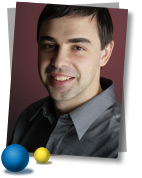
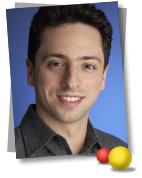
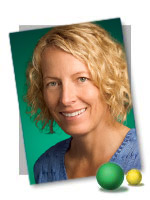



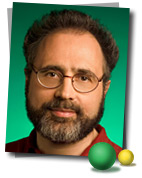

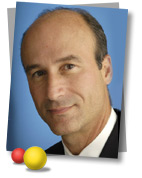
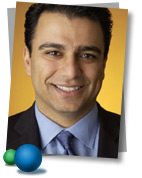
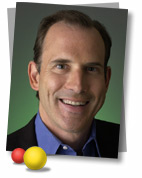


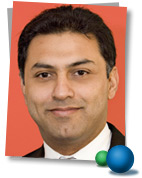

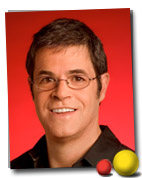
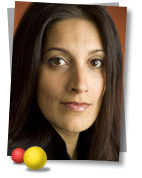
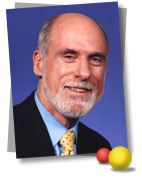




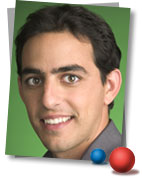

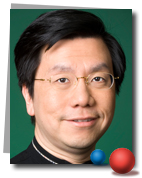
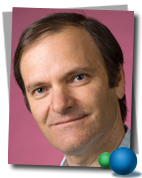
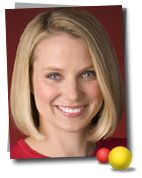
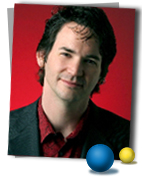
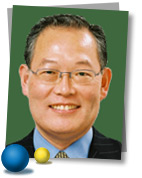


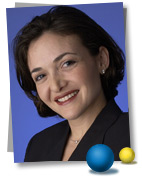


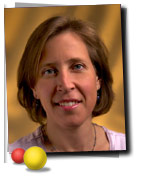

 Google's features and performance attracted new users at an astounding rate. The broad appeal of Google search became apparent when the site was awarded both a Webby Award and a People's Voice Award for technical achievement in May 2000. Sergey's and Larry's five-word acceptance speech: "We love you, Google users!" The following month, Google officially became the world's largest search engine with its introduction of a billion-page index — the first time so much of the web's content had been made available in a searchable format.
Google's features and performance attracted new users at an astounding rate. The broad appeal of Google search became apparent when the site was awarded both a Webby Award and a People's Voice Award for technical achievement in May 2000. Sergey's and Larry's five-word acceptance speech: "We love you, Google users!" The following month, Google officially became the world's largest search engine with its introduction of a billion-page index — the first time so much of the web's content had been made available in a searchable format.